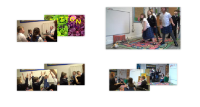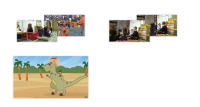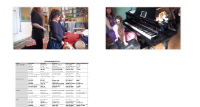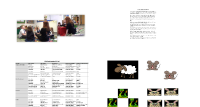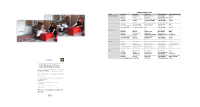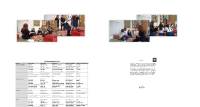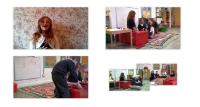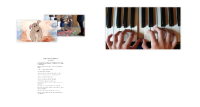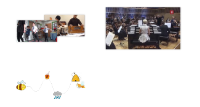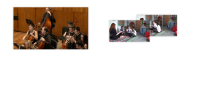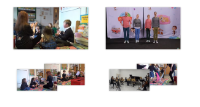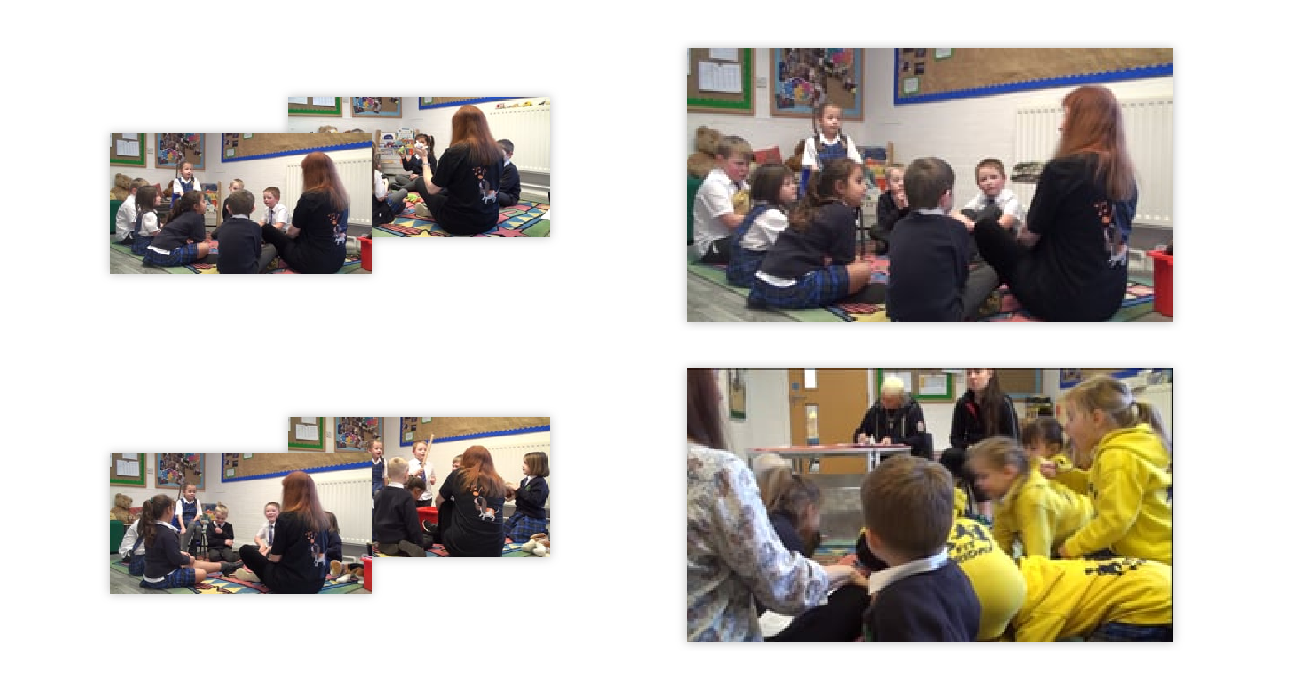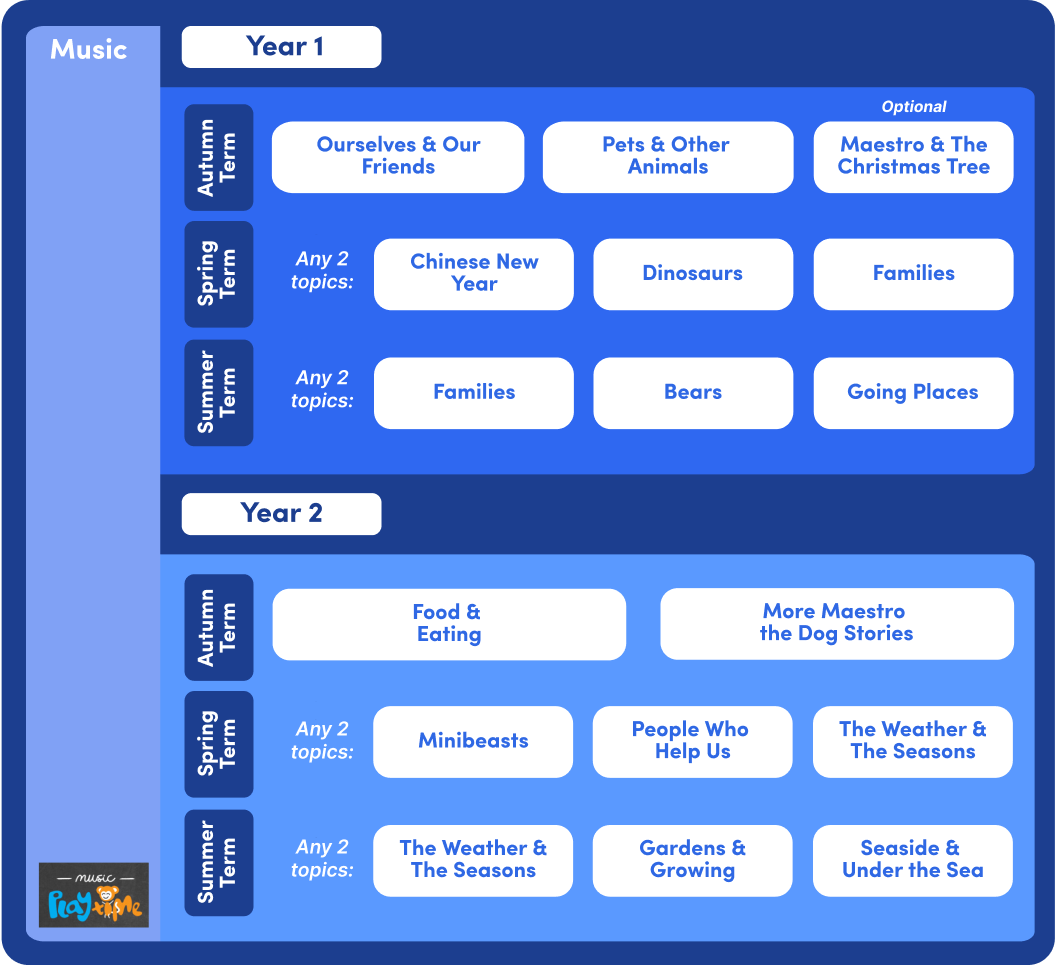Pets & Other Animals Level: Key Stage 1
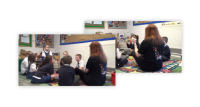
Meet Maestro the Dog
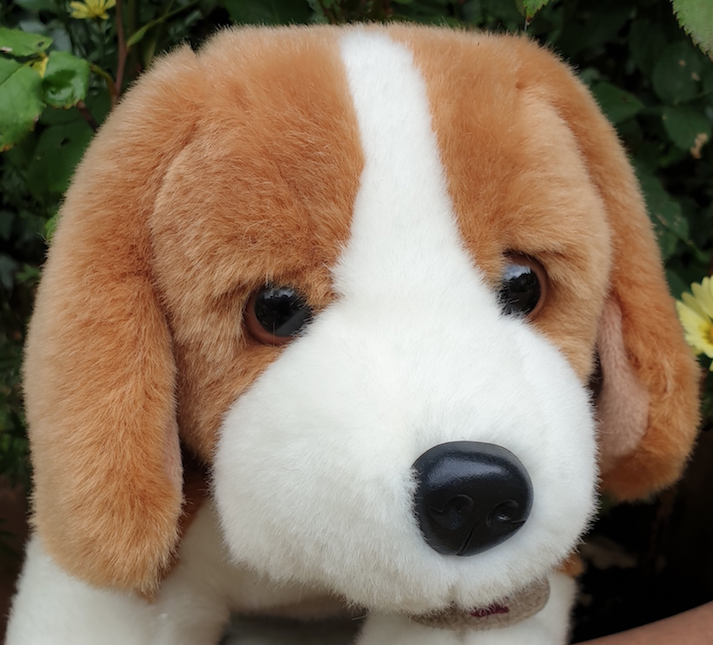
Everyone loves Maestro and he's very good at sitting in the middle of the ring, or being passed round in music games. This is the first little song we sing about Maestro in the Early Years activities. We meet Maestro again in the KS1 Christmas Tree unit and in More Maestro Stories.
Alice the Camel (pitch, structure, rhythm, pulse)
Everyone loves this song! You could teach it in a First me, then you way or by playing the recording, and have the children join it initially with the words, Five humps, four humps and so on for each verse. When the children have heard the song a few times they will know it. Later, you can make them laugh by changing the ending to Alice is a hippopotamus, or what ever amuses you!
- Alice the camel had ... five humps
- Alice the camel had ... five humps
- Alice the camel had ... five humps
- So go, Alice, go!
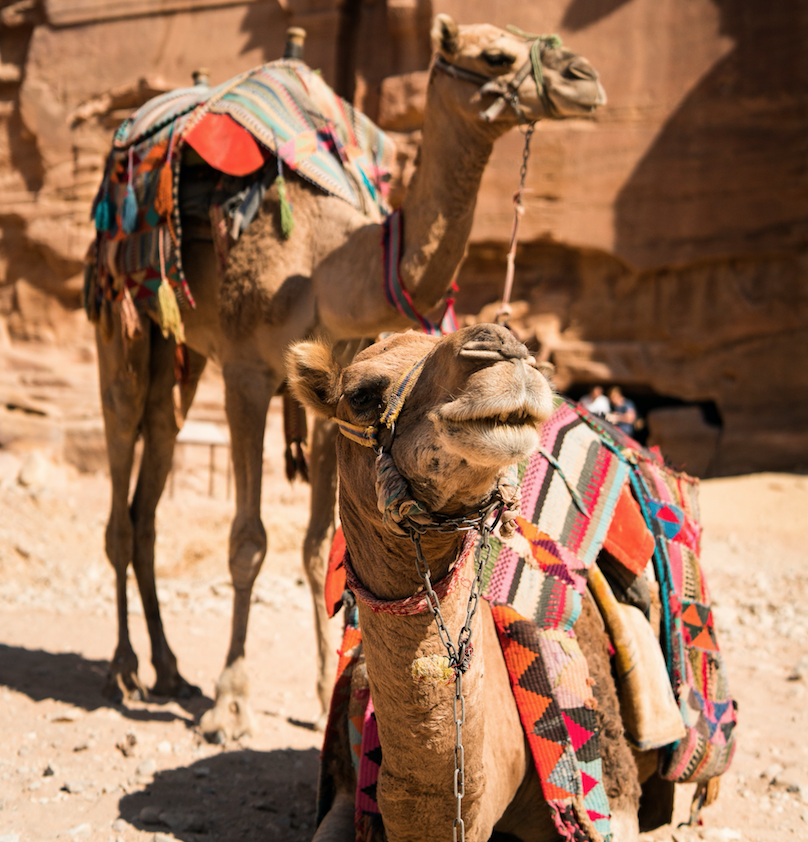
More Alice fun
- Everyone hold up five fingers for the words, Five Humps, then four for the next verse, and so on.
- Have five children standing up for verse 1, then one sit down for verse 2, and so on.
- Give out untuned percussion for the children to play on the words, Five humps, and so on for each verse.
- The notes for Five Humps, four Humps, and so on, are G E. Choose a child to play G, E on chime bars every time the words are sung.
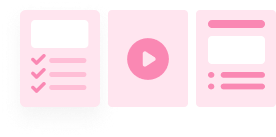
- Five little ducks went swimming one day
- Over the hills and far away
- The mother duck said, Quack quack quack quack
- And four little ducks came back
Five Little Ducks
A lovely counting song. It helps to keep a visual count of how many ducks for each verse, so that you don't get lost, by holding up a card with the right number of ducks each time. You can invent actions to go with this song too. I've just given the words of the first verse but the song is complete in the audio.
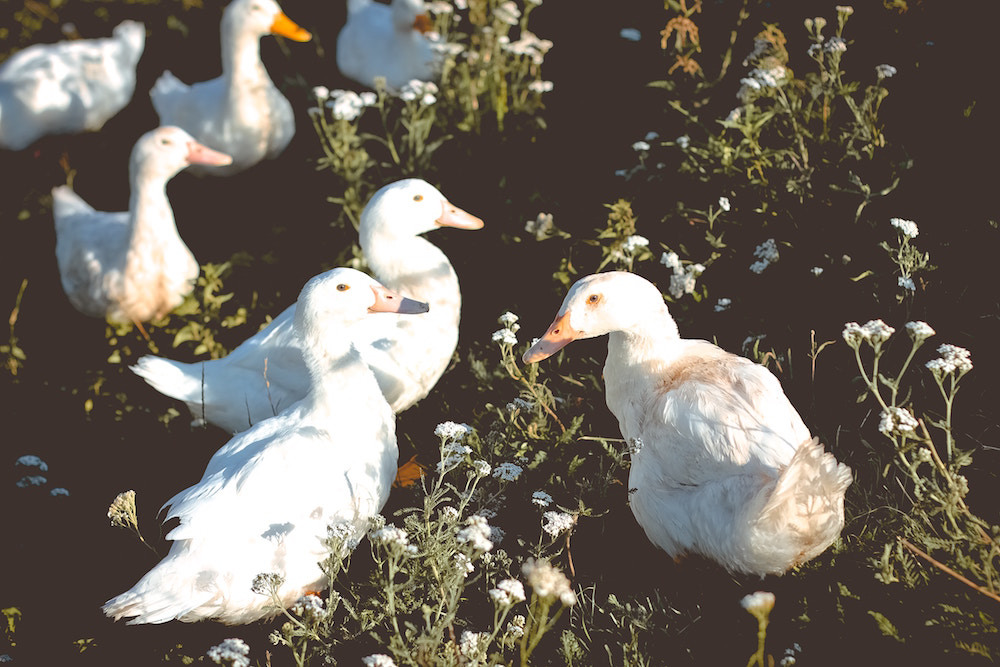
Pass the Animals (pulse)
This game is also in the Early Years Pets and Other Animals unit, but it's worth doing again at KS1 because it's everybody's favourite, as you can see in the video. At KS1, I expect the children to learn to pass the animals in time with the pulse rather than just passing them on when they can 'bear' to part with them! You'll hear me explain this to the children and we start at a slow pace then build up the speed. Notice that the little girl sitting next to me is pretty good at passing in time right from the start. At the end, it all falls apart a bit but it's still good fun!
- PASS the animals ROUND the ring
- ROUND the ring, ROUND the ring
- PASS the animals ROUND the ring
- AND then STOP
- Teacher, sing-song voice: WHO'S got the FROGGY?
- Child, sing-song voice: I'VE got the FROGGY
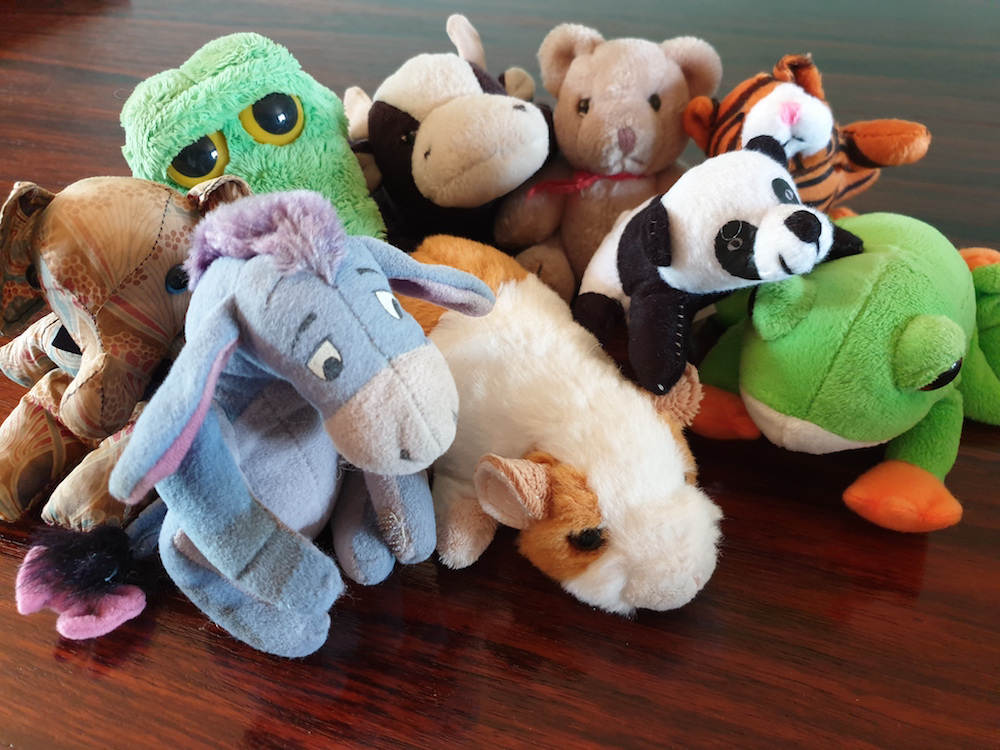
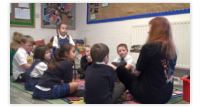
Singing in Tune
Singing in tune is a skill that develops at different rates in different children. Here's my singing helper, Mrs Crocosaurus who is half crocodile and half dinosaur! When the children are all singing in a group, Mrs Crocosaurus provides a non-accusatory way of gently pointing out that not everyone is singing in tune. It goes without saying, I hope, that the days of teachers telling children they are 'non-singers' are well and truly over. Everyone who can speak can sing but it takes some children longer than others to find their singing voice and to control the pitch to match what they hear.
Incidentally, if you find it difficult to stay in tune, the simple explanation is probably that you don't sing very often! Singing these easy songs will help - honestly! Practise in the car on the way to work (but maybe not on the bus!) and after a few weeks you'll feel much more confident. A lovely way of getting over self-consciousness is to let the children know that you're all in this together and everyone is going to work on singing better in tune - they will love you even more for being honest!
Pete the Cat and His Four Groovy Buttons (PSED link)
You will need to buy the book before starting these activities. Everyone watch the video first, which makes a good point about not crying over lost things and provides a starting point for rhythm-based activities. The 'rap' parts of the video demonstrate to you how to read those parts aloud.
Before you read the story again (once isn't enough!), every child needs to paint two paper plates to look like big buttons! Have four children to show one of their buttons and, as the buttons pop off and roll away, one child at a time puts their button down until there are no buttons left..
Make a Rap (rhythm, pulse)
The children could, individually, take turns at being a rap star, making the chant into a rap by saying these words rhythmically, in time with the backing track below. It's quite fast!
- My buttons, my buttons, my four groovy buttons
- My buttons, my buttons, my three groovy buttons
- My buttons, my buttons, my two groovy buttons
- My buttons, my buttons, my one groovy button
- No buttons, not buttons ... NO groovy buttons
If you record these you will have an individual record of achievement for each child and you can select one of them for use in the next activity.
Paper Plate Percussion (rhythm, pulse)
Using one of the raps you recorded, everyone could practise patting their paper plate buttons together in time with the pulse. Pat the plates on the strong beats, like this:
My BUTTONS, my BUTTONS, my FOUR groovy BUTTONS
Beat means the same as pulse - the word, 'beat' is used more often in relation to popular music whereas 'pulse' is usually used for classical music.
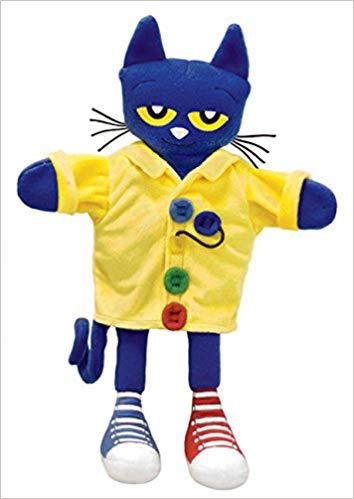
You can buy a Pete the Cat puppet too!

Our Dog, Fen (timbre, texture, silence)
Fen was my Border Collie and I wrote this poem about him for children to make music to. The music is intended to focus on expressiveness rather than on rhythm or pulse and the activity is easily adaptable to groups or whole classes, to everyone speaking, just individuals speaking, or just the teacher speaking. The process of activities like this is invaluable and the end result is satisfying. Here's Fen!

I'm going to show you a series of videos of the work we did using this poem with a small group. It works just as well with a whole class - you just have more children in each group. In the first video, I'm giving the children the chance to make a whole range of voice sounds at the start of the lesson, to plant the seed of the idea of being expressive according to word meanings.
- When our dog Fen was just a pup
- He used to fetch a ball
- He bounced on chairs
- He ran upstairs
- He jumped over the wall
- But now he's old he's good as gold
- He sleeps the hours away
- I wish that he was young again
- And he'd come out to play
- __
- ©Music-Playtime: Arts Enterprise Limited
The Poem (PSED links, being expressive)
When I showed the photograph of Fen, this led to some discussion of the fact that, in the natural scheme of things, our pets die before we do. Then we practised saying the words expressively. In the future, I'll be able to use the word, 'expressively' and the children will have experienced its meaning. I also did a bit of training in how to behave if you want to play an instrument!
Choosing instruments (timbre)
Next, I asked the children to choose an instrument that would make a good sound for the line of the poem they were going to say. I love the way they considered this instead of just picking one out - notice that Edward says of the instrument he'd picked up, 'I don't think that's quite the right sound'. We had already had a lesson in which I used the word, timbre (the distinctive sound an instrument makes) in relation to this box of instruments but I missed out on the chance to use it here!
A Performance With Instruments (texture)
Do you remember that I praised the children for silence at the start of the lessons? Here I'm applying it to our performance. I think the children did well to keep their instruments quiet until it was time to play, and to stop playing at the end (although we did have a bit of speaking). This was their first attempt at work of this sort so I was very pleased.
Final Performance - Instruments Only! (structure)
Here, the instruments are played without any speaking, so the children need to understand the structure of the music they are making. Again this was a first attempt! If you record the music and let the children listen to it, they can self-assess, make suggestions as to improvements and have another go. This is a good opportunity to use the words timbre, structure and texture.
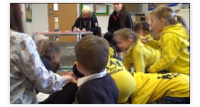
Donkey Trot (pulse, tempo)
Who would love a donkey as a pet? (I would!) Everyone listen to this music. It's called Donkey Trot, composed by Dulcie Holland and it's played on the piano. Listen again, sitting on the floor and ask the children to copy you as you tap your knees in time. They will copy better if you make big movements and then you can tell them, We were tapping the pulse, in time with the music!
Next the children trot along with the music in a circle, keeping the same distance apart, at a trotting speed (tempo) not galloping! This is a chance for you to use the word, tempo with the children. By the way, have you noticed that when children walk together in a circle they always go anti-clockwise? Moving their feet in time with music is difficult for young children so don't be surprised if they can't do this yet but praise anyone who does and let them demonstrate.
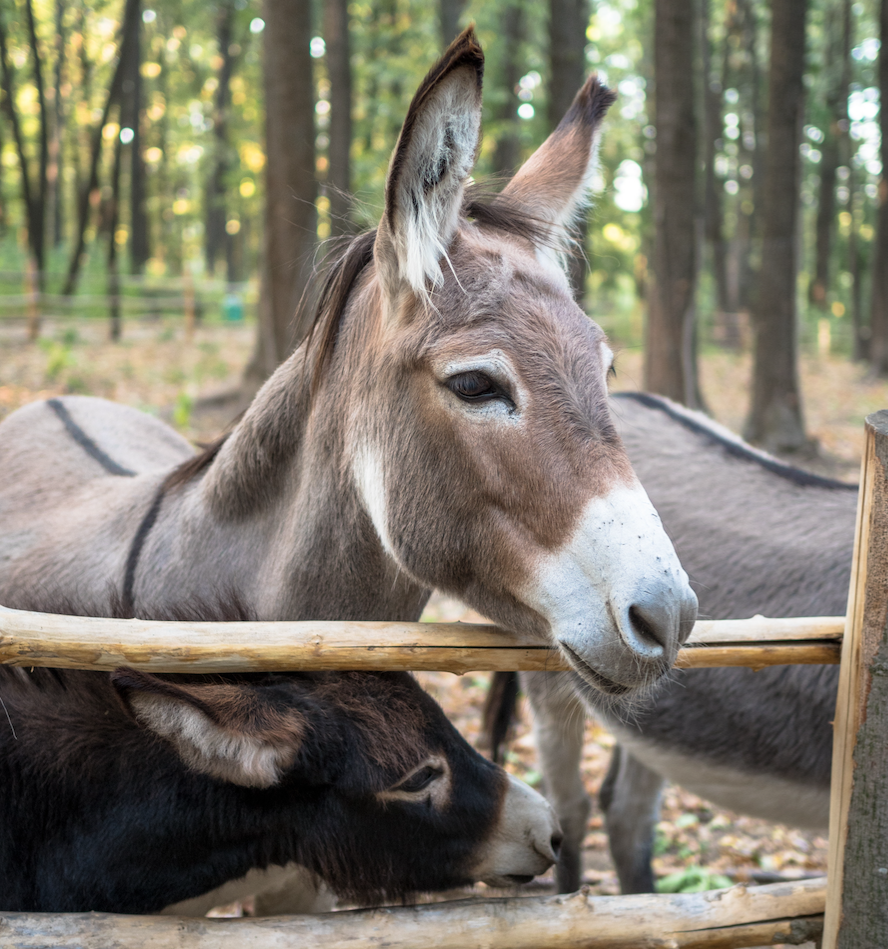
Animal sounds (timbre)
Who can guess which animals are making these sounds? To make the game more fun, pin up six big pictures of the animals around the room - five correct ones (cat purring, dog, pig, cow, birds) and one red herring sheep. The children run to the correct picture when they match the sound, then later say which was the red herring, the one whose sound they didn't hear, and make sheep noises. Remember to say that we can tell the animal noises apart because of their different timbre.
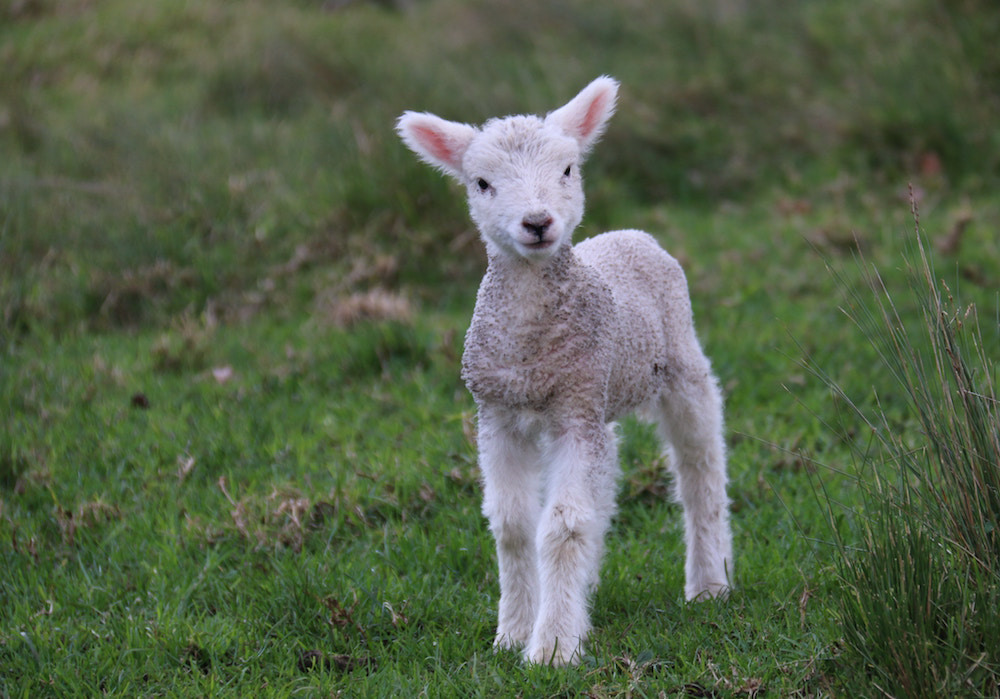

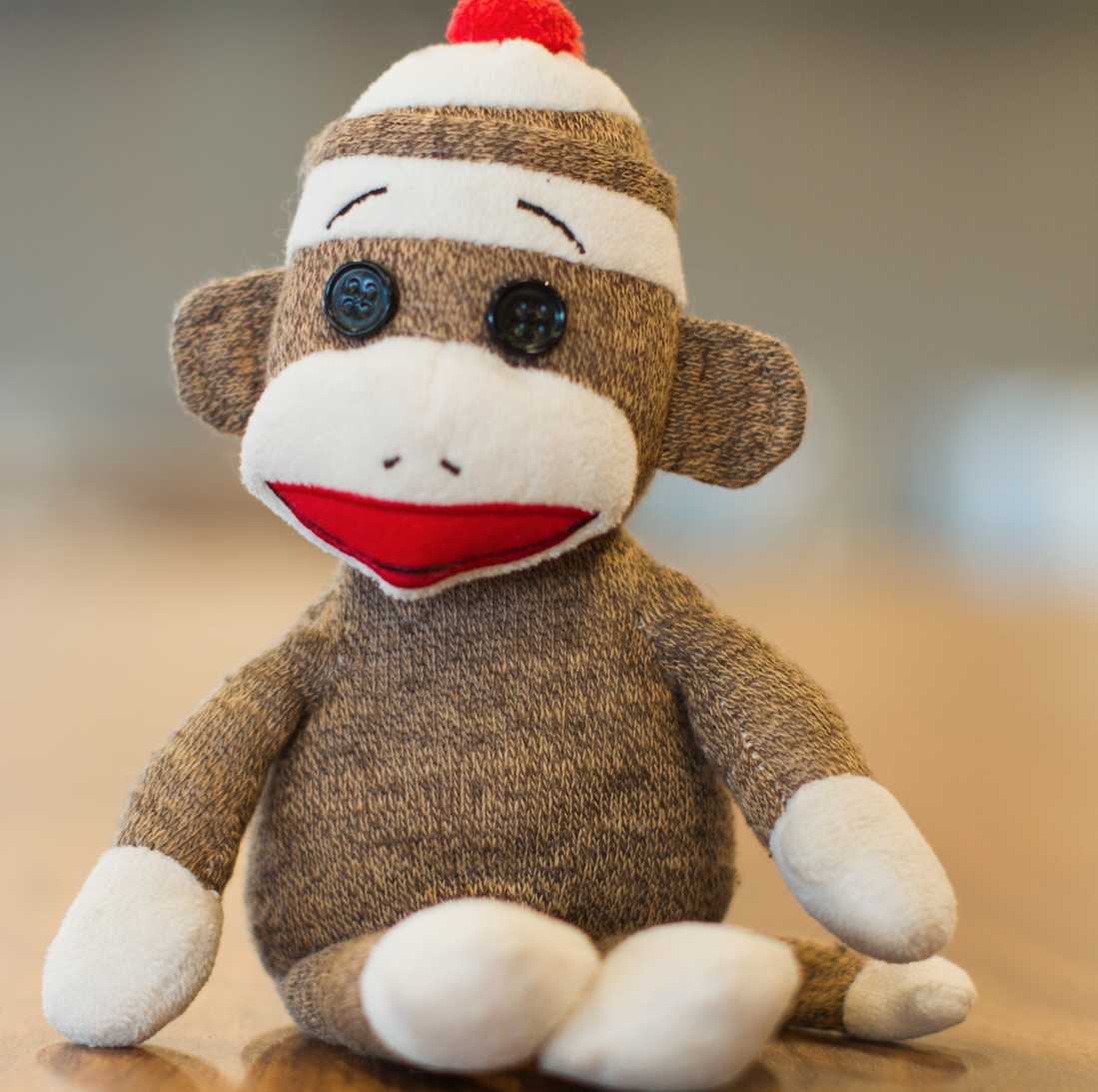
Popular Pets
Pet Graphs (mathematics, art)
Everyone draw and colour a picture, on a small piece of paper, of the pet you would most like to own. (Could use ready drawn pictures for children to colour in.) Cut out, then make a collage-style graph showing which is the most popular pet.
Caring for Cats (PSED)
Here are lots of Cats Protection League resource packs and lesson plans for teachers.
Class Pet Poem (literacy)
Help the children to make up a class poem that they can say in a rhythmical, sing-song way. Start with this outline and fill in the missing words:
- I asked if I could have a pet
- And this is what they said
- You can have a … or a ... or a ... or a ...
- A ... or a ... or a ... or a ...
- I'll have all of those, I said!
You could make it rhyme, or not, eg: You can have a dog or a frog, or a cat or a bat.
My Animal Song (poetry & music)
The children could make up their own word,s. This is Holly's Hippo song, made up and sung at the piano.
- Consider the poor hippopotamus
- His life is unduly monotonous
- He lives half asleep
- At the edge of the deep
- And his face is as big as his bottom is!
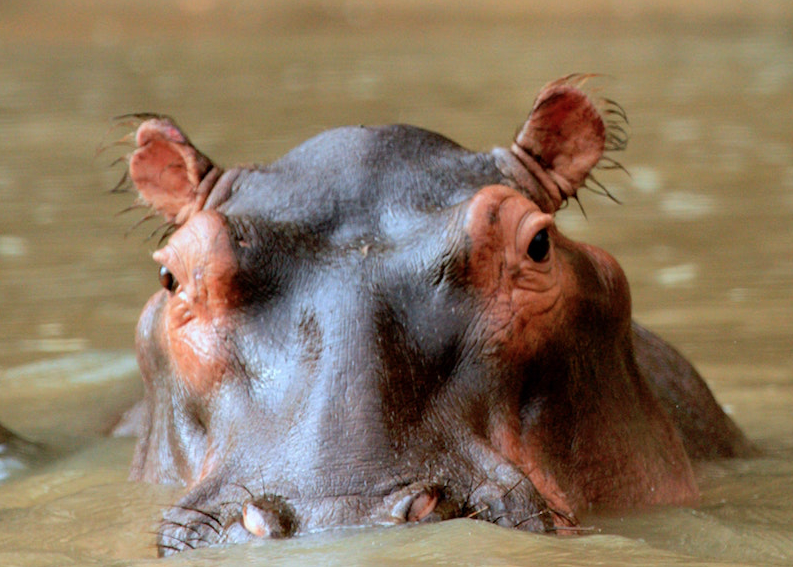
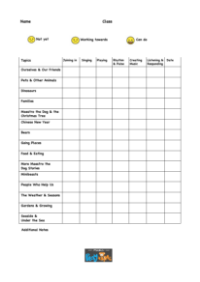

Meet Maestro the Dog

Everyone loves Maestro and he's very good at sitting in the middle of the ring, or being passed round in music games. This is the first little song we sing about Maestro in the Early Years activities. We meet Maestro again in the KS1 Christmas Tree unit and in More Maestro Stories.
Alice the Camel (pitch, structure, rhythm, pulse)
Everyone loves this song! You could teach it in a First me, then you way or by playing the recording, and have the children join it initially with the words, Five humps, four humps and so on for each verse. When the children have heard the song a few times they will know it. Later, you can make them laugh by changing the ending to Alice is a hippopotamus, or what ever amuses you!
- Alice the camel had ... five humps
- Alice the camel had ... five humps
- Alice the camel had ... five humps
- So go, Alice, go!

More Alice fun
- Everyone hold up five fingers for the words, Five Humps, then four for the next verse, and so on.
- Have five children standing up for verse 1, then one sit down for verse 2, and so on.
- Give out untuned percussion for the children to play on the words, Five humps, and so on for each verse.
- The notes for Five Humps, four Humps, and so on, are G E. Choose a child to play G, E on chime bars every time the words are sung.

- Five little ducks went swimming one day
- Over the hills and far away
- The mother duck said, Quack quack quack quack
- And four little ducks came back
Five Little Ducks
A lovely counting song. It helps to keep a visual count of how many ducks for each verse, so that you don't get lost, by holding up a card with the right number of ducks each time. You can invent actions to go with this song too. I've just given the words of the first verse but the song is complete in the audio.

Pass the Animals (pulse)
This game is also in the Early Years Pets and Other Animals unit, but it's worth doing again at KS1 because it's everybody's favourite, as you can see in the video. At KS1, I expect the children to learn to pass the animals in time with the pulse rather than just passing them on when they can 'bear' to part with them! You'll hear me explain this to the children and we start at a slow pace then build up the speed. Notice that the little girl sitting next to me is pretty good at passing in time right from the start. At the end, it all falls apart a bit but it's still good fun!
- PASS the animals ROUND the ring
- ROUND the ring, ROUND the ring
- PASS the animals ROUND the ring
- AND then STOP
- Teacher, sing-song voice: WHO'S got the FROGGY?
- Child, sing-song voice: I'VE got the FROGGY


Singing in Tune
Singing in tune is a skill that develops at different rates in different children. Here's my singing helper, Mrs Crocosaurus who is half crocodile and half dinosaur! When the children are all singing in a group, Mrs Crocosaurus provides a non-accusatory way of gently pointing out that not everyone is singing in tune. It goes without saying, I hope, that the days of teachers telling children they are 'non-singers' are well and truly over. Everyone who can speak can sing but it takes some children longer than others to find their singing voice and to control the pitch to match what they hear.
Incidentally, if you find it difficult to stay in tune, the simple explanation is probably that you don't sing very often! Singing these easy songs will help - honestly! Practise in the car on the way to work (but maybe not on the bus!) and after a few weeks you'll feel much more confident. A lovely way of getting over self-consciousness is to let the children know that you're all in this together and everyone is going to work on singing better in tune - they will love you even more for being honest!
Pete the Cat and His Four Groovy Buttons (PSED link)
You will need to buy the book before starting these activities. Everyone watch the video first, which makes a good point about not crying over lost things and provides a starting point for rhythm-based activities. The 'rap' parts of the video demonstrate to you how to read those parts aloud.
Before you read the story again (once isn't enough!), every child needs to paint two paper plates to look like big buttons! Have four children to show one of their buttons and, as the buttons pop off and roll away, one child at a time puts their button down until there are no buttons left..
Make a Rap (rhythm, pulse)
The children could, individually, take turns at being a rap star, making the chant into a rap by saying these words rhythmically, in time with the backing track below. It's quite fast!
- My buttons, my buttons, my four groovy buttons
- My buttons, my buttons, my three groovy buttons
- My buttons, my buttons, my two groovy buttons
- My buttons, my buttons, my one groovy button
- No buttons, not buttons ... NO groovy buttons
If you record these you will have an individual record of achievement for each child and you can select one of them for use in the next activity.
Paper Plate Percussion (rhythm, pulse)
Using one of the raps you recorded, everyone could practise patting their paper plate buttons together in time with the pulse. Pat the plates on the strong beats, like this:
My BUTTONS, my BUTTONS, my FOUR groovy BUTTONS
Beat means the same as pulse - the word, 'beat' is used more often in relation to popular music whereas 'pulse' is usually used for classical music.

You can buy a Pete the Cat puppet too!

Our Dog, Fen (timbre, texture, silence)
Fen was my Border Collie and I wrote this poem about him for children to make music to. The music is intended to focus on expressiveness rather than on rhythm or pulse and the activity is easily adaptable to groups or whole classes, to everyone speaking, just individuals speaking, or just the teacher speaking. The process of activities like this is invaluable and the end result is satisfying. Here's Fen!

I'm going to show you a series of videos of the work we did using this poem with a small group. It works just as well with a whole class - you just have more children in each group. In the first video, I'm giving the children the chance to make a whole range of voice sounds at the start of the lesson, to plant the seed of the idea of being expressive according to word meanings.
- When our dog Fen was just a pup
- He used to fetch a ball
- He bounced on chairs
- He ran upstairs
- He jumped over the wall
- But now he's old he's good as gold
- He sleeps the hours away
- I wish that he was young again
- And he'd come out to play
- __
- ©Music-Playtime: Arts Enterprise Limited
The Poem (PSED links, being expressive)
When I showed the photograph of Fen, this led to some discussion of the fact that, in the natural scheme of things, our pets die before we do. Then we practised saying the words expressively. In the future, I'll be able to use the word, 'expressively' and the children will have experienced its meaning. I also did a bit of training in how to behave if you want to play an instrument!
Choosing instruments (timbre)
Next, I asked the children to choose an instrument that would make a good sound for the line of the poem they were going to say. I love the way they considered this instead of just picking one out - notice that Edward says of the instrument he'd picked up, 'I don't think that's quite the right sound'. We had already had a lesson in which I used the word, timbre (the distinctive sound an instrument makes) in relation to this box of instruments but I missed out on the chance to use it here!
A Performance With Instruments (texture)
Do you remember that I praised the children for silence at the start of the lessons? Here I'm applying it to our performance. I think the children did well to keep their instruments quiet until it was time to play, and to stop playing at the end (although we did have a bit of speaking). This was their first attempt at work of this sort so I was very pleased.
Final Performance - Instruments Only! (structure)
Here, the instruments are played without any speaking, so the children need to understand the structure of the music they are making. Again this was a first attempt! If you record the music and let the children listen to it, they can self-assess, make suggestions as to improvements and have another go. This is a good opportunity to use the words timbre, structure and texture.

Donkey Trot (pulse, tempo)
Who would love a donkey as a pet? (I would!) Everyone listen to this music. It's called Donkey Trot, composed by Dulcie Holland and it's played on the piano. Listen again, sitting on the floor and ask the children to copy you as you tap your knees in time. They will copy better if you make big movements and then you can tell them, We were tapping the pulse, in time with the music!
Next the children trot along with the music in a circle, keeping the same distance apart, at a trotting speed (tempo) not galloping! This is a chance for you to use the word, tempo with the children. By the way, have you noticed that when children walk together in a circle they always go anti-clockwise? Moving their feet in time with music is difficult for young children so don't be surprised if they can't do this yet but praise anyone who does and let them demonstrate.

Animal sounds (timbre)
Who can guess which animals are making these sounds? To make the game more fun, pin up six big pictures of the animals around the room - five correct ones (cat purring, dog, pig, cow, birds) and one red herring sheep. The children run to the correct picture when they match the sound, then later say which was the red herring, the one whose sound they didn't hear, and make sheep noises. Remember to say that we can tell the animal noises apart because of their different timbre.



Popular Pets
Pet Graphs (mathematics, art)
Everyone draw and colour a picture, on a small piece of paper, of the pet you would most like to own. (Could use ready drawn pictures for children to colour in.) Cut out, then make a collage-style graph showing which is the most popular pet.
Caring for Cats (PSED)
Here are lots of Cats Protection League resource packs and lesson plans for teachers.
Class Pet Poem (literacy)
Help the children to make up a class poem that they can say in a rhythmical, sing-song way. Start with this outline and fill in the missing words:
- I asked if I could have a pet
- And this is what they said
- You can have a … or a ... or a ... or a ...
- A ... or a ... or a ... or a ...
- I'll have all of those, I said!
You could make it rhyme, or not, eg: You can have a dog or a frog, or a cat or a bat.
My Animal Song (poetry & music)
The children could make up their own word,s. This is Holly's Hippo song, made up and sung at the piano.
- Consider the poor hippopotamus
- His life is unduly monotonous
- He lives half asleep
- At the edge of the deep
- And his face is as big as his bottom is!


